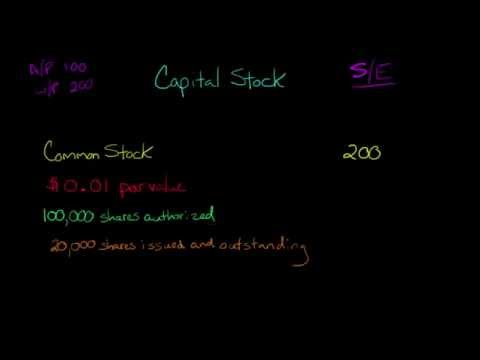Guide to Capital Structure Definition, Theories and Approach


Detailed assessment of short-term & long-term cash requirements for a company and make sure that business will reach its critical competencies. Many corporations started during depression find themselves to be under-capitalised in the period of recovery or boom due to unforeseeable increase in earnings. Generally, under-capitalisation is regarded equivalent to the inadequacy of capital but it should be considered as the reverse of over-capitalisation i.e. it is a condition when the real value of the corporation is more than the book value. Reorganisation of the company by selling shares at a high rate of discount. The ordinary meaning of capitalisation in the computation appraisal or estimation of present value.
Furthermore, it will be necessary to convince holders of existing bonds to accept new bonds with reduced interest rates in place of their current ones. If the new bonds are offered to bondholders at a premium, they may agree to accept them. Capital raised through equity shares is also a sort of perpetual loan for the company since it is not repayable during the lifetime of the company. It is repayable only in the event of company's winding up and that too only after the claims of preference shareholders have been met in full.

This day was already a feast day of several mysterious early Roman martyred Saint Valentines, but Chaucer described it as a day for people to choose their lovers. We should first turn to Geoffrey Chaucer, the 14th-century poet, civil servant and keen European traveller. Chaucer's poem from the 1380s, The Parliament of Fowls, is held to be the first reference to February 14 as a day about love. People have been celebrating the day and gifting love tokens for hundreds of years.
Effects of Over Capitalization
Debt restructuring is a process wherein a company or an entity experiencing financial distress and liquidity problems, refinance its existing debt obligations in order to gain more flexibility in the short term and make their debt more manageable overall. Generally, over capitalisation meaning it is a strategy for keeping the company afloat and getting a company back on track financially. Usually, in such cases an adjustment is made by lender, creditor etc. to smoothen temporary difficulties towards loan repayment faced by the company.
What is capitalisation over and under?
Generally, under-capitalisation is regarded equivalent to the inadequacy of capital but it should be considered as the reverse of over-capitalisation i.e. it is a condition when the real value of the corporation is more than the book value.
In this instance, a significant portion of profits is paid as interest to the creditors, leaving little money for dividends to be paid to the shareholders. The market value of shares also decreases due to the dividend rate falling, which is a sign of overcapitalisation. When a company's earnings are continuously insufficient to generate a reasonable rate of return on the amount of capitalization, it is said to be over-capitalized. Moreover, a firm is said to be overcapitalised if it cannot pay the interest on its long-term debt and debentures and the fair dividend rates on its shares.
FAQ 4. What do you mean by capital structure in financing decisions?
It may be difficult to identify a direct relationship between particular borrowings and a qualifying asset and to determine the borrowings that could otherwise have been avoided. Such a difficulty occurs, for example, when the financing activity of an entity is co-ordinated centrally. Difficulties also arise when a group uses a range of debt instruments to borrow funds at varying rates of interest, and lends those funds on various bases to other entities in the group. Other complications arise through the use of loans denominated in or linked to foreign currencies, when the group operates in highly inflationary economies, and from fluctuations in exchange rates.
Balancing out the portfolio with a good combination of all of these can minimise the chances of risk. This is the most widely used method around the globe to evaluate a company. Since this is one of the universally accepted methods, this makes it easy for investors to understand a company’s value irrespective of their geographical or economic locus. Dr. Anil K. Sharma a Professor in the area of Finance & Accounting in the Department of Management Studies, IIT Roorkee is M. Phil, First Class First and Gold Medalist and Ph.D. in Financial Management from Panjab University Chandigarh. He is working at IIT Roorkee for the past more than 17 years and has more than 24 years teaching experience in total.
Thus it is never dependent on the previous history of a company. There can be economic bubbles where companies are caught for a particular period. Capitalize has a great value in making a rough calculation of the capital that is being transformed into useful money in the company.
- Financial assets, and inventories that are manufactured, or otherwise produced, over a short period of time, are not qualifying assets.
- Preference shares are entitled to a fixed rate of dividend.
- These companies offer a higher growth potential than do large-cap stocks, and hence more investors are attracted to investing in such companies.
- The term "capitalisation" in corporate finance refers to a firm's total holdings of debt and equity.
The shortage of capital is also a contributory factor of over-capitalisation, the inadequacy of capital may be due to faulty drafting of the financial plan. Thus a major part of the earnings will not be available for the shareholders which will bring down the real value of the shares. Over-capitalisation has nothing to do with redundance of capital in an enterprise. On the other hand, there is a greater possibility that the over-capitalised concern will be short of capital. The abstract reasoning can be explained by applying certain objective tests. These tests require the comparison between the different values of the equity shares in a corporation.
Effect on the firm:
The company can utilise huge surplus funds at its disposal by redeeming the redeemable preference shares as per the provisions of the Companies Act. Financing through preference shares is cheaper as compared to financing through equity shares. Preference shares are entitled to a fixed rate of dividend. There are different types of equity mutual fund schemes and each offers a different type of underlying portfolio that have different levels of market risk. Equity funds are managed by experienced professional portfolio managers, and their past performance is a matter of public record.
What is the meaning of under-capitalisation?
Undercapitalization means that a company does not have enough capital to conduct ordinary business operations. Undercapitalization may also lead to the company being unable to pay its creditors.
Undercapitalization is not the so-called inadequate capital. Over capitalization can be reduced with the help of effective management and systematic design of the capital structure. The following are the major steps to reduce overcapitalization. When the appropriate course of action is agreed upon, it should be carried out promptly and smoothly to come out of the current financial issues without disturbing the business. Planning for achievable targets for the turnaround of a business, setting aside time to evaluate the impact and then being open for creative ideas are also necessary for measuring success.
What is 'Capitalization Rate'
When we speak in terms of over-capitalisation we always have the interest of equity holders in mind. All the rules in normal grammar serve some type of function that always relates to conveying a clear which means. Capitalization’s function is to assist present the reader the significance of various phrases. For example, let’s take a look at how capitalization can show significance with some nouns. Over-capitalized issues steadily lose market to their opponents as a result of in the first occasion they fail to provide goods at competitive value owing to lack of adequate provision for substitute of depleted or worn-out assets. Capitalisation refers to the total amount of securities issued by a company while capital structure refers to the kinds of securities and the proportionate amounts that make up capitalisation.

The annual loss in the working of strategic lines should be borne by the General Revenues. As well as other ancillary matters in connection with the Railway Finance vis-à-vis the General Finance and make recommendations thereon. The average borrowing rate chargeable to Commercial Departments. Fund not being in a position to meet the programme of expenditure chargeable to that Fund from its own resources, money shall be advanced from Central Revenues to the Railways for utilization on those projects or works which are of a developmental nature. As a result of the decision of Government taken in 1952, the practice of constituting Standing Committees of Parliament was abandoned. Railway Depreciation Fund.-The expenditure chargeable till 31st March, 1924 to" programme revenue" was shown from 1st April 1924, under a Depreciation Fund created to meet the cost of replacements and renewals.
Capitalisation in Finance
A business is said to be overcapitalised if the value of its debt and stock exceeds the value of its whole assets. Accordingly, its market value is lower than its capitalised value. If a firm pays excessive prices for goodwill, trade names, patents, copyright, and other intellectual property, as well as significant promotional expenditures in the form of payments to marketers for their services, it may be over-capitalised. The cost of underwriting; and distributing the equity share capital is generally higher than that for preference share capital or debentures. Moreover, the dividend on equity shares is not deductible as an expense out of profits for taxation purposes. One of the principal disadvantages of financing through preference shares is that preference dividend is not deductible as an expense for taxation purpose out of the profits of the company.
You can calculate the market value cost of capital by multiplying the company’s shares with the number of outstanding shares in the market. Consider that a company has a total of 10,000 outstanding shares, and the stock has a price of Rs.20. Is that the company has very little money left after paying higher taxes to distribute dividends to shareholders at the current rate. Additionally, the business can run out of money for working capital and funding to substitute and restore worn-out assets. As a result, the company's productivity will decline, and the value of its shares will diminish. The investment focus of these mutual funds is on small-cap companies.
Transparency and reporting requirements for equity funds are heavily regulated by the federal government. There can be immediate changes brought about in the market at any time. All these can determine the capitalization of a company also. This is generally made by calculating over a fixed period of time.
Management of working capital sometimes becomes more important than the management of long term funds because the day-to-day operations of any business largely depend upon this source of finance. Many firms have been seen in the past closing down for the want of short term finance. The profitability of any business to a larger extent is affected by this source of finance due to efficient management of current assets and current liabilities. Hence, learning about managing working capital has become more important and critical in the modern scenario. Value of any firm is calculated by capitalisation of it’s after tax earnings.
If you have a high-risk tolerance, you can invest in mid-cap stocks. It is the term used to describe the method of delaying the recognition of the expenses. This is done by recording the expenses in the form of assets that are long term. This is highly helpful to the companies which are acquiring high valued assets.
The deferred liability is to be paid out of the future surpluses of the line after payment of current dividend. While the Capital costs of ferries and staff welfare buildings were exempted from payment of dividend, on cha capital cost of residential buildings dividend is payable at 3.5 per cent. Loan as at present from the General Revenues to meet the full dividend liability when the Railways' net revenue is not adequate to pay the dividend to the General Revenues and the Revenue Reserve Fund has no or insufficient balance to make good the shortfall.
What is the meaning of under-capitalisation?
Undercapitalization means that a company does not have enough capital to conduct ordinary business operations. Undercapitalization may also lead to the company being unable to pay its creditors.
